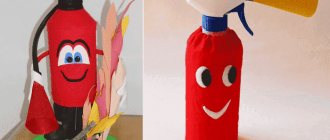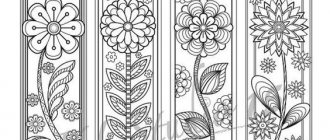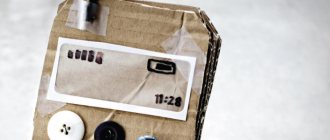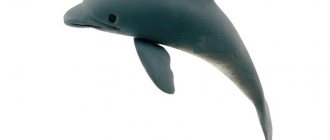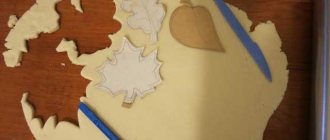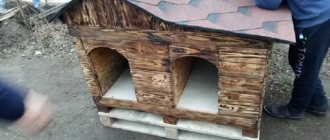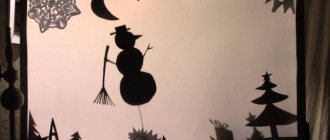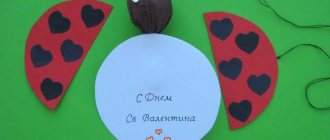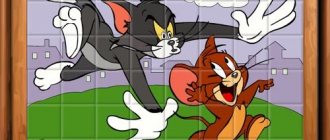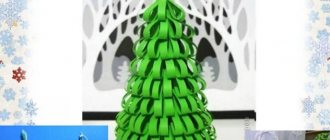Red telephone boxes in Great Britain are street kiosks with a public telephone that have become a symbol of the country. They can be found not only in Great Britain - especially in London or somewhere in the outback - but also in the “sponsored” territories of the kingdom, in former colonies - in Malta, Bermuda, Gibraltar. Since 1926, telephone boxes have been decorated with the Tudor crown, symbolizing the British Raj. It was first executed in the version Kiosk No.2, or simply K2, designed by the architect Giles Gilbert Scott.
Giles Gilbert Scott belonged to the Scott architectural dynasty and was the grandson of the major Victorian architect Sir George Gilbert Scott (Albert Memorial, St Pancras Station, Foreign Office Building). Giles Scott became famous for buildings that were not as famous as his grandfather, but still implemented several landmark projects: the Battersea Power Station in London, the Cambridge University Library, Clare College, and the Liverpool Anglican Cathedral. Perhaps his worldwide fame was brought to him by two small buildings, replicated throughout the 20th century - telephone booths K2 (first place in a competition organized in 1924; the results were summed up in 1926) and K6 (project of 1935).
The telephone booths are painted a bright, “currant red” color to make them easy to spot on the street. The kiosk dome, a distinctive feature of Scott's designs, is a direct reminiscence of the family crypt of Sir John Soane, the most prominent Palladian architect of the Georgian and Regency periods (who built the massive Bank of England in London). Scott was an admirer of Soane and a trustee of his museum in London.
The traditional style kiosks were modern and functional for their time. A sophisticated ventilation system was installed in the dome (perforated holes). The glass was divided into small parts (18 glasses on three sides) for quick replacement if they were broken. Initially, Scott proposed making the K2 kiosk a lightweight structure made of mild steel, painted duck egg blue, but the client for the project, the British Post Office, insisted on cast iron and red. It is noteworthy that residents of rural areas asked to repaint the red kiosks, like a scarecrow in a field, green - and somewhere this demand was fulfilled (nowadays it is a great success to find such options).
Kiosk K6 is a modernized version commissioned by Scott in 1935 to celebrate King George V's Silver Jubilee - his 25th year on the throne. In this regard, the K6 is sometimes called the “anniversary” booth. This kiosk is smaller and lighter than its “big brother” K2 (height 2.51 m versus 2.82 m; width 0.9 m versus 1.07 m; weight 0.69 tons versus 1.27 tons) and is cheaper to manufacture. The cup-handled doors are made of teak, the base is made of concrete, and the main structures are made of cast iron. In addition, here the Tudor crown on the dome is not a metal plate with ventilation holes, as in the K2 project, but is designed in the form of a bas-relief without holes. The ventilation is hidden under a matte illuminated sign. The distribution of windows has been changed: instead of 6 glass rows in K2 there are already 8, the central windows have been enlarged for better lighting. In general, the project corresponds to the spirit of the times, when Art Deco was popular in England (modernism had difficulty taking root in the Islands in the 1930s): the appearance of the kiosk is laconic, simple and with a minimal set of classical details.
The K6 is the most widely produced version of telephone boxes in the UK, with around 60,000 units installed between 1935 and 1968 (compared to around 1,700 K2 units). These red kiosks were widely used outside London and became symbols of the country. In London, the working original, for example, can be found near the Royal Academy of Arts, but for the most part the booths are no longer used for their intended purpose.
Red Kiosk at the Royal Academy of Arts
We are unlikely to be wrong if we assume that the mention of London makes your imagination draw a gloomy landscape, covered in gray haze, through which the spire of the Elizabeth Tower peeks through. The general bleak picture is enlivened only by the bright red double-decker omnibuses scurrying through the streets. Apparently, it was precisely because of the increased “nebula” of Albion that the British, acting contrary to their love for restrained tones, always tried to give expressive colors to the key objects of their capital: simply so that they could be easily seen. Along with the bus, another element of the urban environment of London was destined to “dress” in scarlet: it became the English telephone booth, which subsequently turned from an ordinary utilitarian thing into a recognizable symbol of England.
So, the red booth, intended for private telephone conversations, now displaced from the London streets by mobile communications, has migrated to interiors, coming under the close attention of craftsmen. And no wonder - such an exclusive item is difficult to manufacture; you cannot put it into series: furniture manufacturers rarely include this interior attribute in their “price list”. The popularity of the London rarity is consistently high, especially among restaurateurs and adherents of design with elements of kitsch. What can we recommend to those who have decided to make an English telephone booth with their own hands?
Crafts on the theme of England - how to make an English telephone booth?
An English telephone booth made of paper is a rectangular parallelepiped. The diagram for an English telephone booth is simple and you just need to draw four regular rectangles on paper.
Craft for school on the theme of England:
English telephone booth made of paper
- Now let's draw a semicircular roof of the booth using a compass. If you don't have one on hand, take a cup of the appropriate size and draw a semicircle.
Paper phone booth diagram
- So that the booth has a roof, we will make another circle and cut its edges. All that remains is to cut out a rectangle from paper, which will be the roof of the booth.
English telephone booth made of paper with a semicircular roof.
Classic English telephone booth in red. Its doors and walls are glass. How to make an English telephone booth from colored paper?
- On thick white paper, draw a drawing of the booth.
- Cut strips of red construction paper.
- Glue it onto a white one in the form of a lattice - we get an imitation of windows.
- Now, along the perimeter of the door and walls, on top of the grille, we will paste thicker strips of red paper.
- Let's bend the booth and glue its bottom and roof.
- To make the booth door open, we cut the paper.
That's all! The booth is ready
English telephone booth made of paper
For those who are ready to experiment, you can try making a booth with transparent windows.
- Make a booth according to the scheme described above.
- Cut out the windows around the perimeter and glue a lattice of red paper.
- Attach transparent film or paper for wrapping bouquets to the back side and glue it with a frame larger than the film. This will create a pocket for transparent film.
How to make an English telephone booth with transparent windows
Dog house dimensions
At the first stage of building a home for a dog, you need to decide on its size. They depend on the size of the pet. An animal can belong to one of 3 types. Practice has shown that the following parameters are suitable for each type of dog:
Three options for removing paint from a concrete wall -...
How to build a house from timber on a summer cottage yourself
BACK FORWARD 1 of 11
- The size of the kennel for small dogs such as a pug, terrier or spaniel is 55 cm wide, 70 cm long and 60 cm high. The opening size is 30 by 40 cm.
- For medium-sized animals, such as Shar Pei, Foxhound or Basset Hound, the dimensions of the booth are 75 cm wide, 120 cm long and 80 cm high. The opening size is 35 by 50 cm.
- A booth for dogs of large breeds, which include Alabai, Mountain Dog or Dalmatian, width 100 cm, length 140 cm and height 95 cm; The size of the hole is 40-50 by 60 cm.
The actual dimensions of the animal and the table do not always coincide. If the booth is being made for a puppy who is still growing, you can use the table measurements.
The dimensions of the booth vary depending on the actual dimensions of the animal. Some animals have non-standard dimensions, in such cases it is better to take individual measurements. The pet's chest should fit freely into the hole. The Alabai breed is distinguished by its large dimensions. The dimensions and drawing of the Alabai booth are determined only after taking measurements from the animal.
Crafts for school on the theme of England - how to make a double-decker bus out of paper?
If your child was asked to make crafts for school on the theme of England, do not despair, but roll up your sleeves and tell him how to make a double-decker bus out of paper. The work will not be difficult, and it consists of several steps.
- Draw the outline of your bus on paper
How to make a double-decker bus out of paper
- Paint the walls of the bus and glue the four sides together. Instead of coloring, you can use colored paper. Then all the elements will need to be done in appliqué style.
Paper bus parts
After the glue has dried, glue half of the second floor and the roof to the bus. If desired, you can make seats for passengers and the driver.
How to make a paper seat for a bus?
- Cut out blanks for chairs from waste cardboard
Cardboard blank for a bus seat
- Wrap the cardboard blank in fabric, glue or sew with a few stitches.
How to make a bus out of paper
- Glue the seats to the bottom of the bus.
How to make a double-decker bus from paper
A bus can also be made from cardboard. The video below shows more details of the bus. This craft is for those who like to work with paper and cardboard with children.
Crafts on the theme of England - how to make Big Ben out of paper?
You can make your own English clock tower Big Ben from thick paper or cardboard. The easiest way is to draw its details and clocks on paper. Here's how children make Big Ben out of cardboard, simplifying the tower's design a little.
How to make a big ben out of paper
It was very difficult to complete all the small parts of the tower, since this clock tower consists of a large number of small parts.
Craft for school on the theme of England:
- How to make Big Ben out of paper? Take thick paper or cardboard and make a simple drawing.
Big Ben made of paper
- You will need to draw stripes and a clock on the tower. It will be more difficult to make the top of the tower, which has the shape of a cut pyramid. First make a pyramid that will be on the tower above the clock, then glue the base to it, on which the upper pyramid will be.
Diagram for the truncated lower pyramid of the tower and the base for the upper pyramid
- All that remains is to make the upper pyramid. Its sides must match the size of the base to which it will be glued.
Diagram of the upper pyramid of the tower and assembled view of the tower
To avoid disappointment, check whether you cut out the pyramids correctly. Before painting, make test pyramids and fold the structure. If everything turned out well, cut out new ones according to your drawings. Now you can paint the blanks and glue small parts, if any. Glue the tower parts together.
Construction of a drawing
A dog house is built according to a diagram with dimensions. A design with many parts is not made. Various partitions, ladders, openings and ledges make the house more interesting, but they disturb the pet and do not provide any practical value. Choose a simple rectangular shape with a pitched roof so that your pet can climb on it. If there is not enough space, they design an option with two slopes. There is an entrance on the side. The roof or one of the walls is made removable for ease of cleaning and disinfection. An example of a simple drawing is shown in the photo below.
Crafts on the theme of England in Irish style: clovers and leprechauns
Great Britain is not only London, with its famous double-decker buses, Big Ben and Tower Bridge. Each part of the united kingdom has its own unique culture. If you want your English-themed craft to be original, create an Irish-style composition.
Crafts on the theme of England: leprechauns
In England, St. Patrick's Day is celebrated on a grand scale, it is celebrated on March 17, on this day everything turns green: clothes, food and even beer. In general, St. Patrick's Day is a national holiday in Ireland, but the British also celebrate it very widely.
Every British child knows that the symbol of St. Patrick's Day is leprechauns.
Leprechauns are little people who shun people and have untold wealth. It is believed that leprechauns' main passion is gold, and they hide their treasures where the end of the rainbow is. If a person manages to catch a leprechaun, he can give him his treasures in exchange for freedom. And you need to catch the little man by luring him with gold. You can make a leprechaun trap out of cardboard, felt and foil.
Crafts on the theme of England: leprechaun hat
It’s not difficult to make such a hat: you will need:
- Carton boxes.
- Felt.
- Stationery glue.
- Twigs and strong thread to tie them.
- Colored paper or cardboard.
- Foil to make gold. You can also add beads that will imitate precious stones.
Leprechaun hat made from cardboard boxes and felt
- The lid should be glued on only one side, so that it becomes a trap.
A sign near the trap warns that climbing the ladder is prohibited!
We build a simple booth with our own hands
If you try, you can make a dog house yourself in two hours. Let's look at what needs to be taken into account during construction.
Drawing of the future house
You shouldn’t build even such a simple structure without a sketch. A drawing of a booth is easy to make and can be done anywhere, even on checkered paper. If you are planning a more sophisticated kennel design, it is better to find ready-made drawings.
Even using your own sketches, you need to consider the following parameters:
- The base of the kennel should be square or approximately square. Let your pet fit comfortably both along and across the home.
- If the kennel is intended for a mother with puppies, it is better to nail small slats at a distance from the floor and walls. This way the dog will not crush the offspring.
We will consider detailed recommendations regarding each stage of construction below.
Tools and materials needed for construction
To make the simplest dog house with your own hands, you will need:
- metal scissors;
- wooden blocks;
- wood screws;
- insulation;
- sandpaper for cleaning boards;
- special antiseptic impregnation for home treatment and paint and varnish materials.
The best material for walls is OSB or chipboard sheets. There are no cracks in them, which will provide protection from drafts and precipitation.
Making a frame
The bars for the entire frame and fastening the walls must be strong and free of knots; the wood should not contain strong odors or foreign impurities.
- Before erecting the frame, the site is cleared and, if necessary, leveled.
- Assemble the base. The perimeter is made of beams, fastened with self-tapping screws.
- They install vertical posts made of beams and connect them to the base with metal corners. The racks are fastened on top with crossbars along the entire perimeter - this creates the main frame.
- To add rigidity, additional crossbars are made in the middle of the racks.
Important! It is best to take the beams for the booth from coniferous trees.
Making the floor and roof
Floor boards are treated with sandpaper and antiseptic. They are strengthened on the lower perimeter of the frame.
The outside of the booth wall is covered with boards, and the inside with sheets of the selected material. Insulation is laid in each wall between the outer and inner parts.
The roof can be made single-pitch or gable. But in any case, folding, providing supports. This makes it more convenient to clean the dog’s home and carry out timely disinfection.
We insulate the dog house
Now let's talk about insulation. Dogs tolerate cold better than heat, but they are just as susceptible to colds and can freeze. It is worth remembering that the thickest layer of insulation will not protect a smooth-haired dog from the cold, so such breeds cannot be kept outside.
Important! During production, metal should be used to a minimum, otherwise the animal may freeze in winter. Hypoallergenic, odorless materials are suitable for insulation.
It is recommended to use natural bedding in the booth. It is better to abandon the tradition of giving your dog an old sweater and other warm clothes. The best bedding for a doghouse is not wool or sawdust, but barley hay.
Mineral wool
Mineral wool is the most reliable and most popular material, serving as an excellent insulation. Mineral wool has soundproofing properties.
The material is hygroscopic, which means it needs to be isolated as much as possible from any moisture, and also prevent the material from coming into contact with the pet’s skin.
Of the four types - glass wool, slag wool, stone wool, and basalt - preference is given to the first material.
Polystyrene foam or polystyrene foam
For insulation, non-pressed polystyrene foam is suitable, which is used to protect packages with household appliances. The material is not subject to rotting, biological effects, and weighs little.
If in the area where you plan to build a kennel, the weather changes sharply and unexpectedly, the material will cope with any temperature changes.
Crafts on the theme of England: a hobbit house made from natural materials
Hobbits are not as ancient characters as leprechauns. They are a figment of the imagination of the British writer John Ronald Tolkien, and the world only learned about them in the 20th century. But hobbits are so popular all over the world that they have already become another new symbol of Britain. And from natural materials you can make a hobbit house, which will be an excellent craft on the theme of England for school.
To do something similar, you will need:
- Flower pot.
- Earth and moss.
- Green and dry twigs.
- Plasticine or salt dough, which should then be decorated with paints.
Crafts on the theme of England: Hobbit's house
You may find more ideas for crafts for school in our following articles:
- Paper houses
- Easy crafts in 5 minutes
- Children's crafts for kindergarten
Dog house with canopy
A kennel with a canopy is suitable for large watchdogs.
The canopy protects the animal from rain and snow, but at the same time allows it to calmly guard the area. The area under the canopy should be the same size as the kennel itself or a little larger so that the entire body of the animal can fit on it. Housing with a canopy will definitely appeal to the following dog breeds:
When making a drawing of a doghouse for a shepherd or any other large breed, be sure to take into account the canopy.

